Exploring Marine Ecosystems with the Local Community
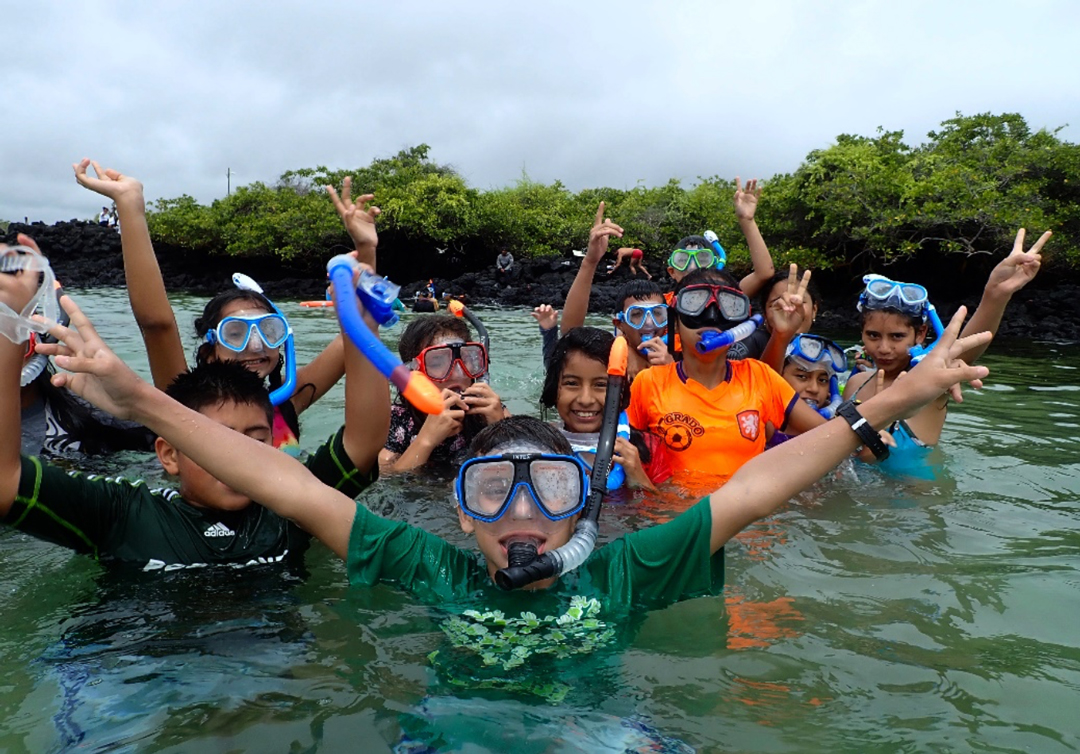
Students from the Caupolicán Marín school of Bellavista - Santa Cruz, snorkelling to identify marine species during 'Marine Mornings'. Photo © Daniela Vilema
When living in an archipelago, it is common to think that all people visit the beach frequently, that they swim or that they snorkel as many of the people who visit the islands to get to know one of the most pristine places in the world. However, the reality in the Galapagos Islands is different. Through our marine education project, we have met many students who cannot swim and many who have never been able to observe marine life through a diving mask. When asking the children, the reasons, they mentioned that they do not visit the sea frequently to practice swimming, besides the fear of water, sharks and other animals.
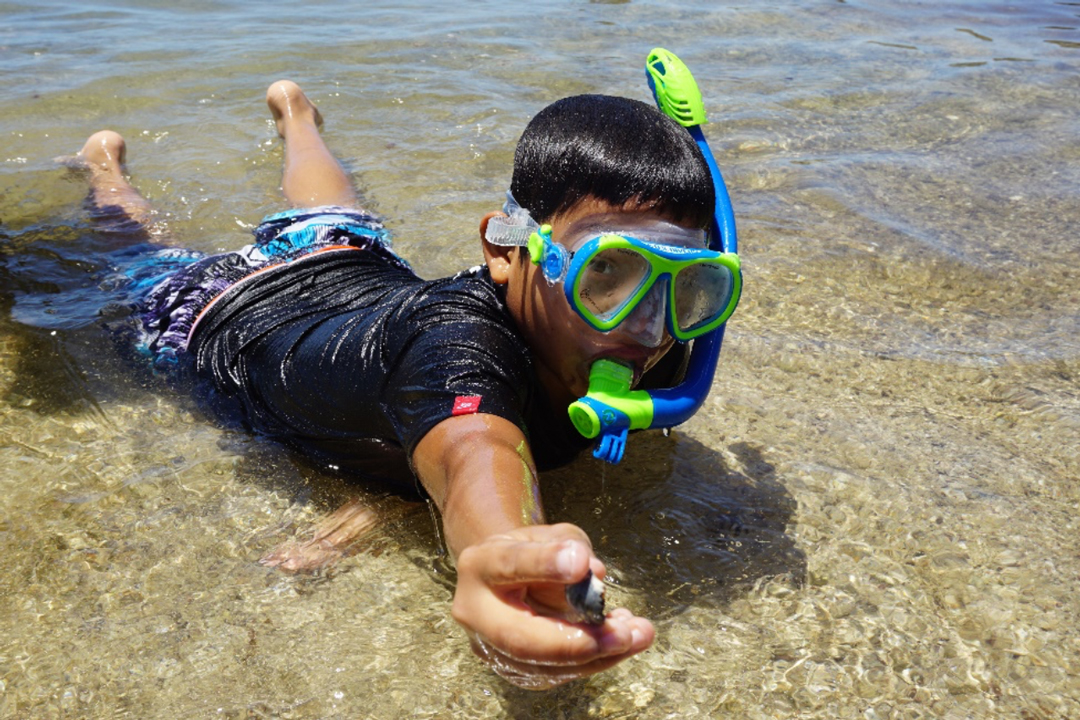
Student of the school Julio Puebla Castellanos of El Cascajo in the highlands of Santa Cruz, snorkeling during the class of marine invertebrates in mangroves in 'Marine Mornings'. Photo © Daniela Vilema
The marine education project of the Charles Darwin Foundation (CDF) began in 2017 with the aim of involving the community in the conservation of sharks and marine ecosystems. Every Wednesday and Friday, we meet with our Shark Ambassadors Club, with whom we develop practices mostly in the water to learn about the importance of the conservation of the oceans and their biodiversity through exploration and the replication of scientific methodologies to study different species. At the moment we have 50 local students between 12 and 17 years old from different schools in Santa Cruz. As part of the project, the Van Straelen Interpretation Center of the CDF and the Galapagos National Park Directorate was renovated after 18 years with an exhibition called “Marine World”, which in addition to receiving local, national and international visitors, is used as a classroom to complement the activities with the students.
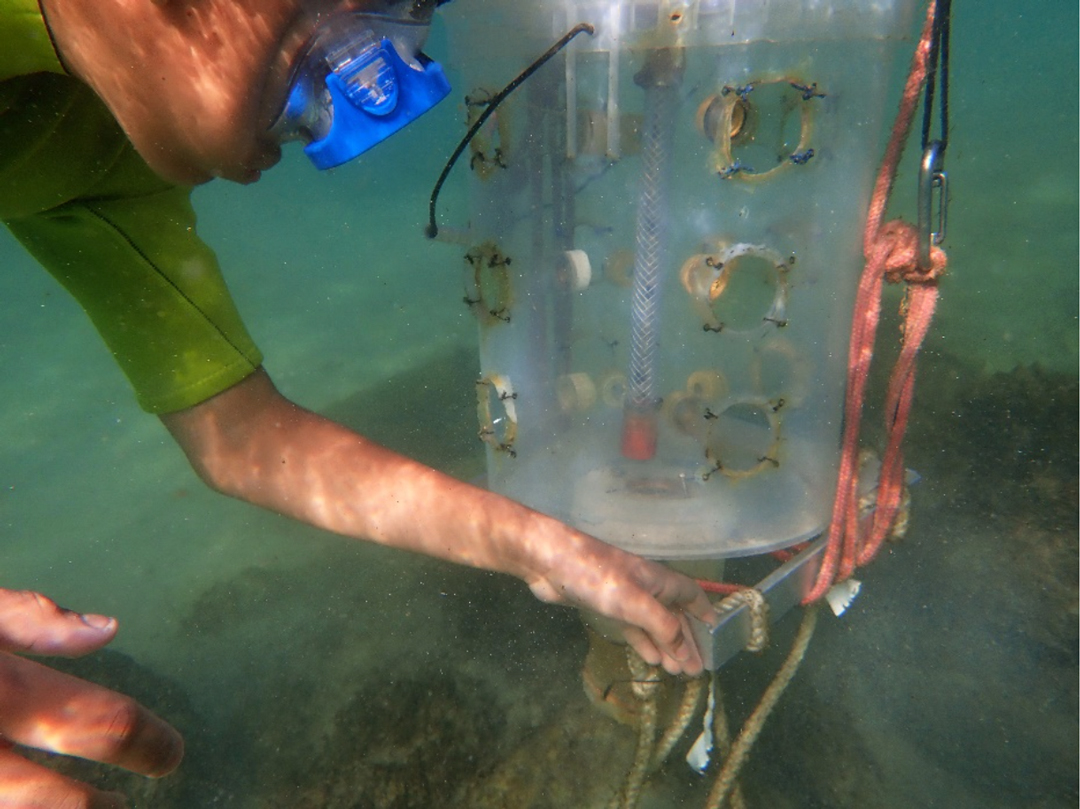
Shark Ambassador placing a light trap to collect fish larvae in the mangroves during the fisheries practice at the Charles Darwin Research Station. Photo © Luis Cevallos
As part of our project, we implemented the “Marine Mornings” component, which offers the teachers of the different schools and high schools, an alternative to make field trips with their students and learn more about oceans’ conservation. These fieldtrips allow students from 2nd to 10th grade in Santa Cruz, San Cristóbal, Isabela and Floreana, to explore different ecosystems of the island where they live. We have base activities that adapt to the teacher’s requirement to complement the topics learned in the classroom focusing mainly on sharks, marine ecosystems and the impact of plastic in the oceans. As part of the activities with the children, we make a tour in “Marine World”, we go to the beach to snorkel, we identify species, develop beach clean-ups, explore the mangroves and rocky shores, we watch documentaries according to the topic, among others. “I have lived here for more than 20 years and I have never visited La Ratonera beach,” one of the teachers mentioned, and this is the case of many of the students that visit us. So far we have received more than 300 students from Santa Cruz and soon we will be working with more schools in the rest of the inhabited islands.
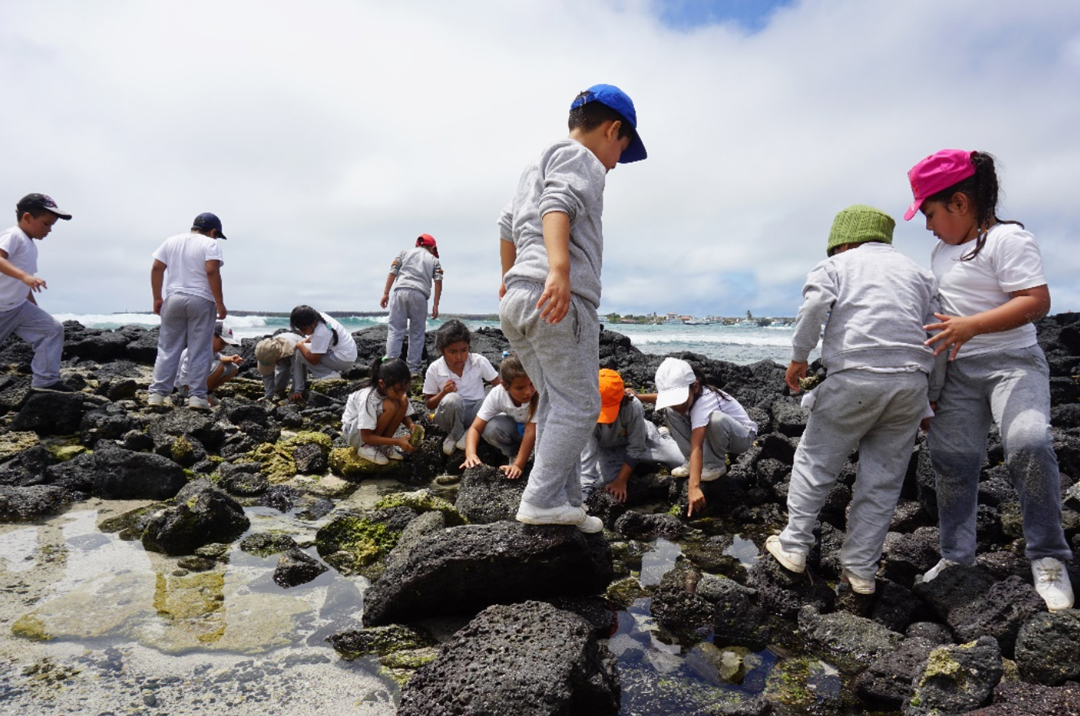
Students of the Oswaldo Guayasamín school of Santa Cruz exploring rocky shores in La Ratonera beach. Photo © Luis Cevallos
Upon entering the water, each student receives a snorkel equipment, we carry buoys and those who cannot swim receive a short swimming class so they can enjoy the practice observing fish and other marine animals. The experience of this project has been very enriching; when we see students who at first did not want to enter the water but who after 30 minutes are shouting with emotion the characteristics and colors of the animals they have seen, it is priceless. Together with the students we have been able to observe a great variety of fish, rays, invertebrates and even sharks. In the same way with the Shark Ambassadors we have carried out several practices in the water in which we have been able to observe a large number of species.
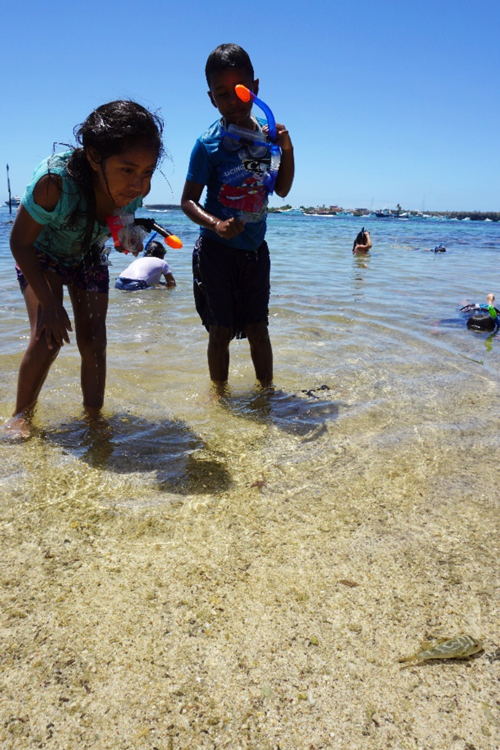
Students of the Caupolicán Marín school of Bellavista in the highlands of Santa Cruz, observing a bullseye puffer near the shore. Photo © Daniela Vilema
Additionally, we are working on a project that aims to change attitudes towards marine pollution, in which all the students that visit us, the Shark Ambassadors and other members of the community are contributing through the different beach cleanups we carry out. The collected plastic will be used to build a sculpture that will reflect the impact that this material causes in the oceans and will be complemented by a campaign to disseminate information and solutions to the community. It is difficult to speak about marine conservation if we do not know and understand the importance of what exists under water and if we do not explore its surroundings. That is why experiential learning is essential to foster the connection between people with the place where they live. Living surrounded by the ocean is undoubtedly a paradise and working to protect it is our mission.
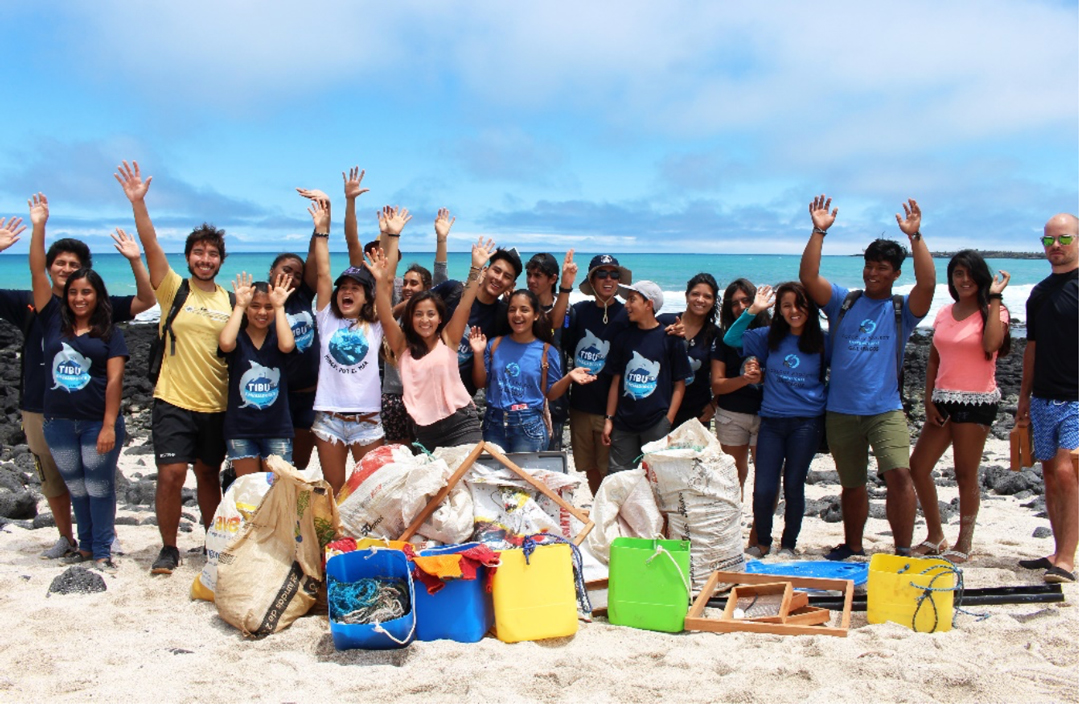
Beach clean-up developed by the Shark Ambassadors Club, Mingas por el Mar and Ecology Project International for International Coastal cleanup day. Photo © Charles Darwin Foundation archive
Thanks to the Save Our Seas Foundation, Lindblad-National Geographic and an anonymous donor for making this project possible!
